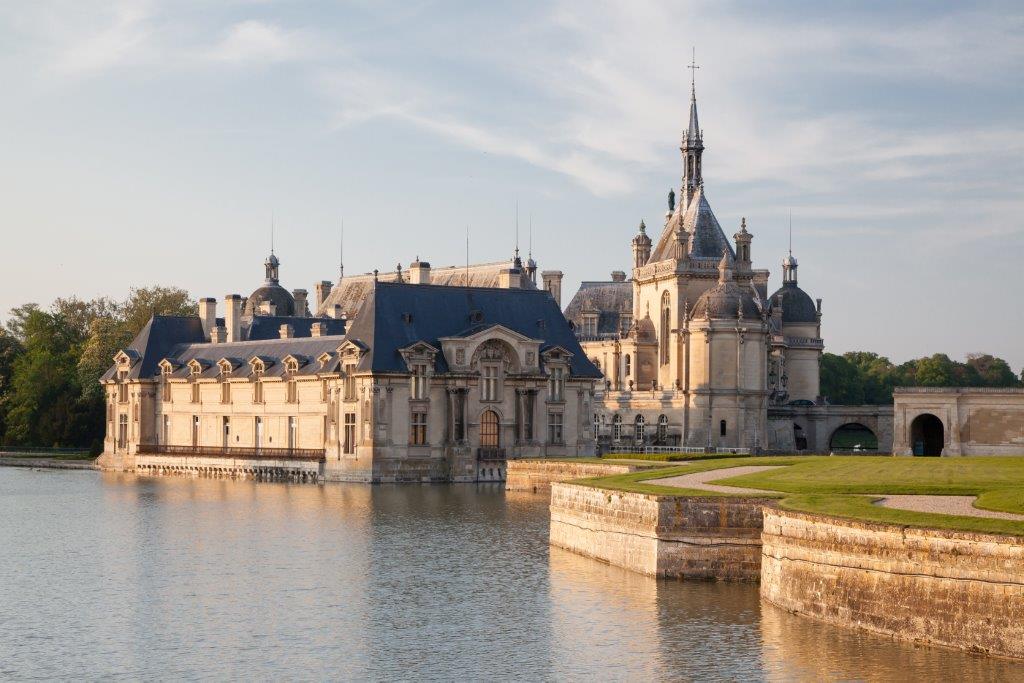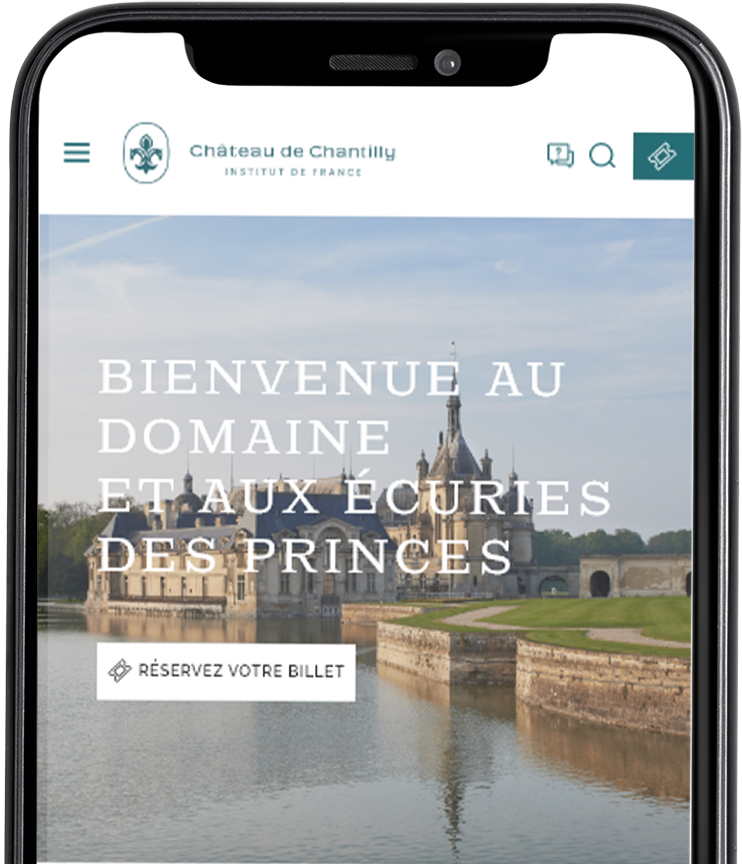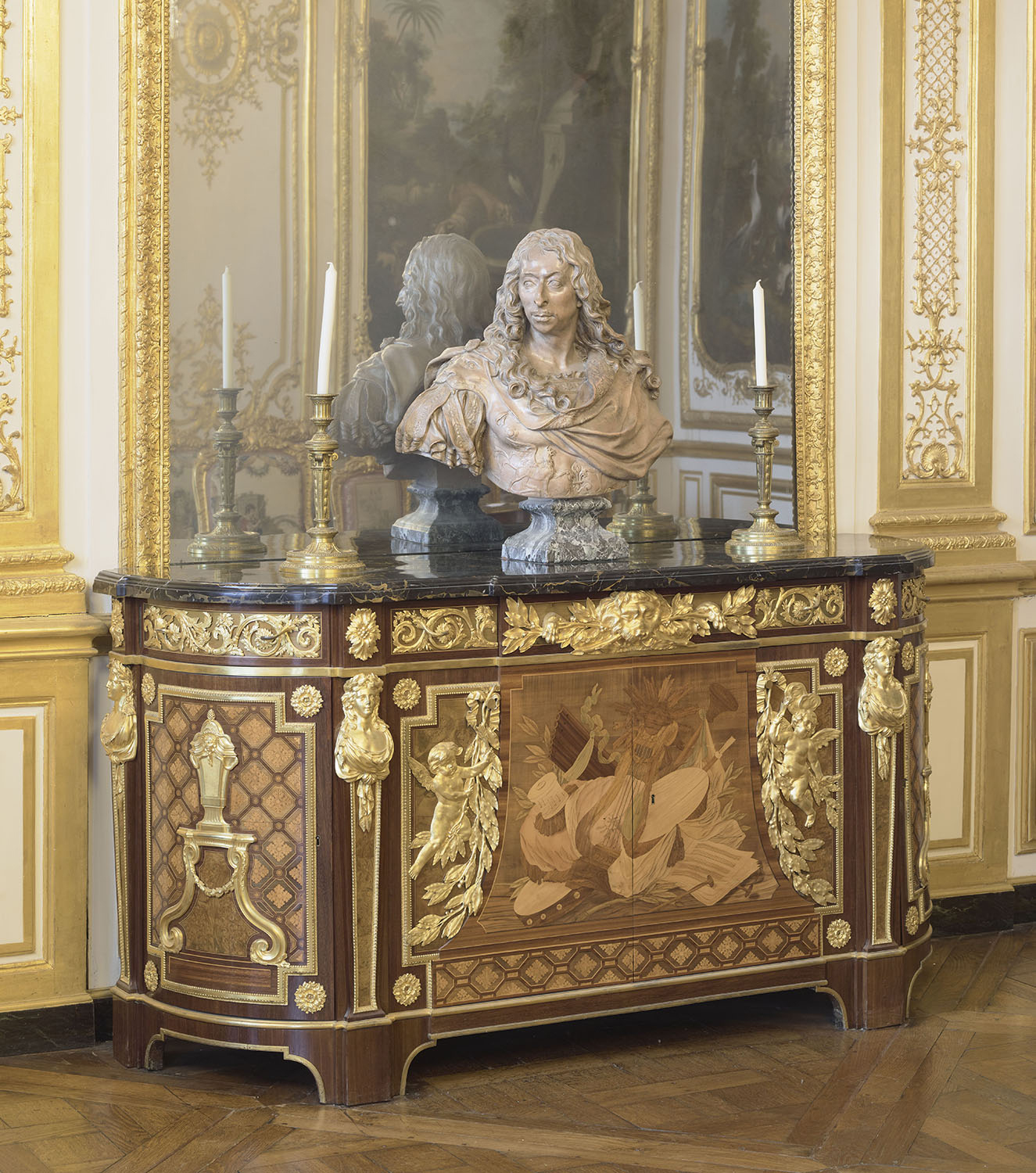
Lavishly furnished and ornately decorated princely suites
Located on the 1st floor of the château, the large suites were used as reception rooms by the Princes of Bourbon-Condé. They are a wonderful example of the ceremonial decors in fashion in the 18th century and provide a broad variety of decorative arts, furniture and Old Master paintings. These areas, which were severely looted during the Revolution, were reconfigured in the 19th century by the Duke of Aumale, who collected, acquired and inherited precious furniture and decorative arts from the royal family and the royal châteaux with which he recreated the grandeur and opulence of the time of the Princes of Condé.
The antechamber and the Guard Room
The antechamber and the Guard Room were built at the end of the 19th century by Honoré Daumet to connect the grand château to the old petit château. Three elements are reminiscent of the Condé family’s time in Chantilly: two paintings by Jean-Baptiste Oudry depicting hunting scenes, and the mineral cabinet by Haupt which was given to Prince Louis-Joseph of Condé in 1774 by King Gustave III of Sweden to thank him for his stay at Chantilly.
Find out more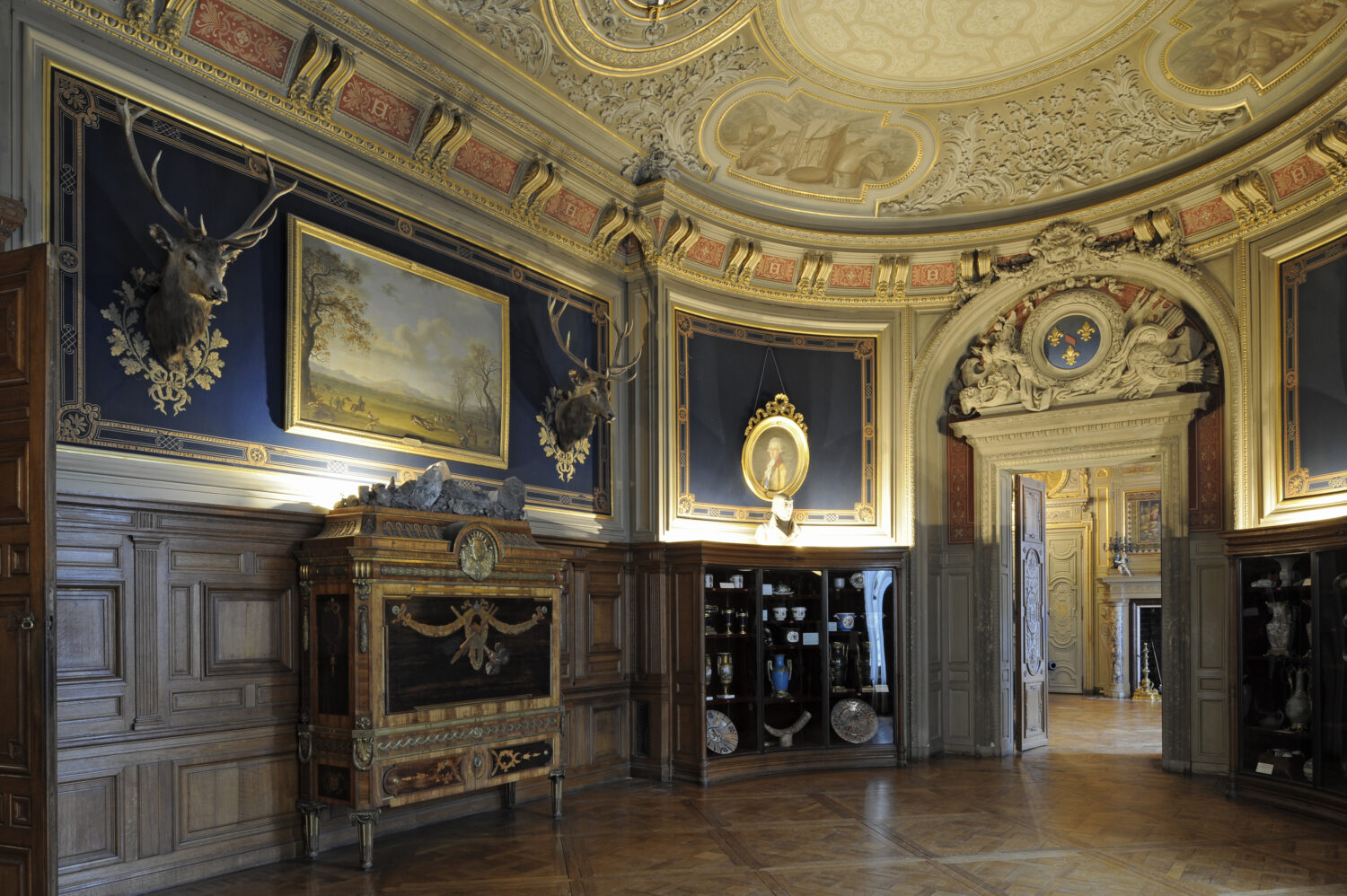
© Gary Otte
The Large Corner Room
The Large Corner Room was the Prince of Condé’s office and it is here that he held audiences. It is decorated with white and gold woodwork dating from approximately 1720 and adorned with hunting motifs. The neoclassical seats and chairs, made by Jean-Baptiste Sené, date from the reign of Louis XVI. The fireplace screen, executed by Boulard, belonged to the Count of Provence, future king Louis XVIII.
Find out more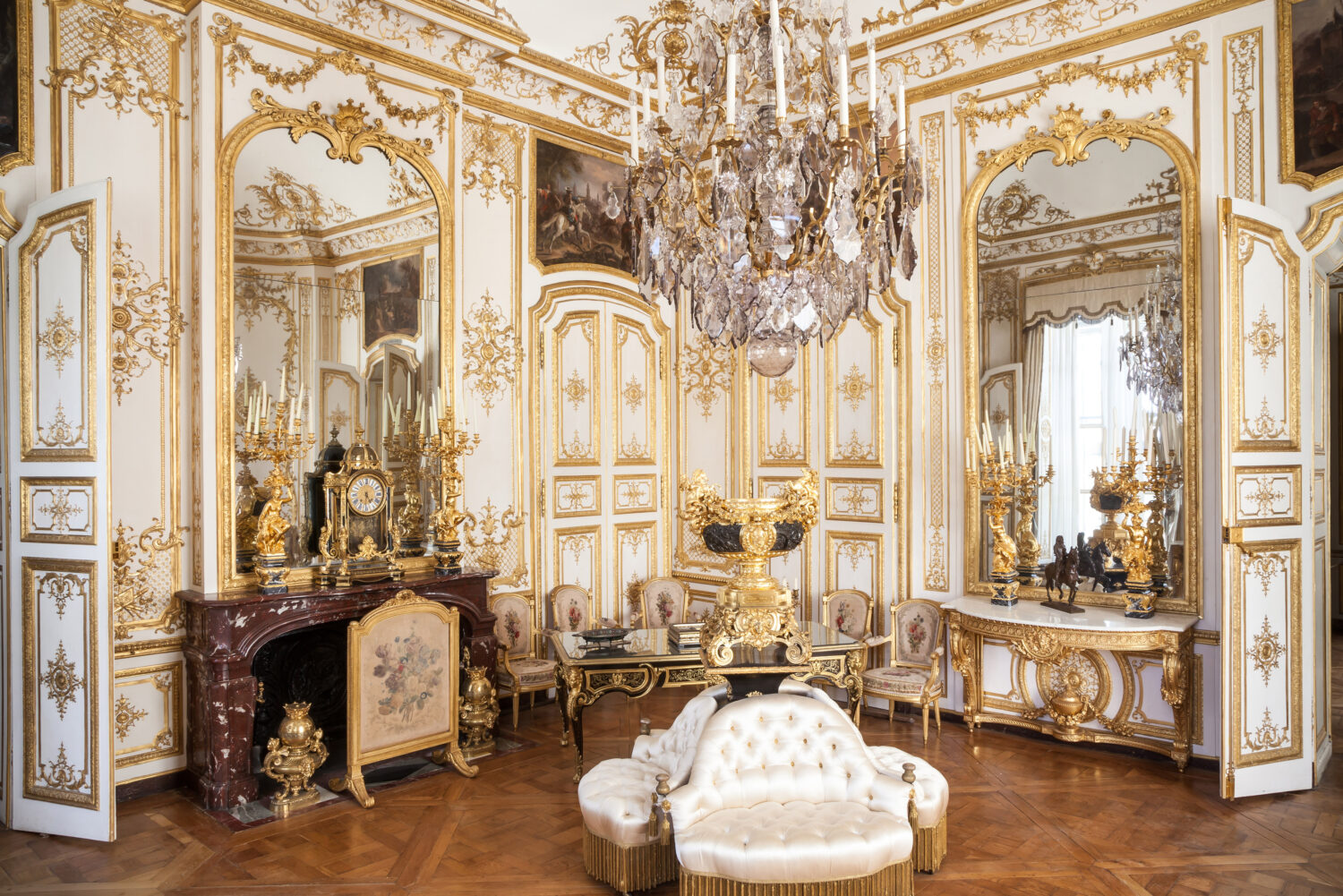
© Sophie Lloyd
The Prince’s bedroom
This room marked the entrance to the Prince of Condé’s large suites. With its décor of white and gold panels, it is typical of the early Rococo style. The woodwork was executed by the architect Jean Aubert around 1720 for Louis-Henri de Bourbon, 7th Prince of Condé (1692-1740), and minister of King Louis XV. The original furniture was unfortunately dispersed during the Revolution and the Prince’s bedroom thus lost its four-poster bed. Visitors can admire the chest of drawers by Riesener here, originally commissioned for King Louis XVI’s bedroom in Versailles.
Find out more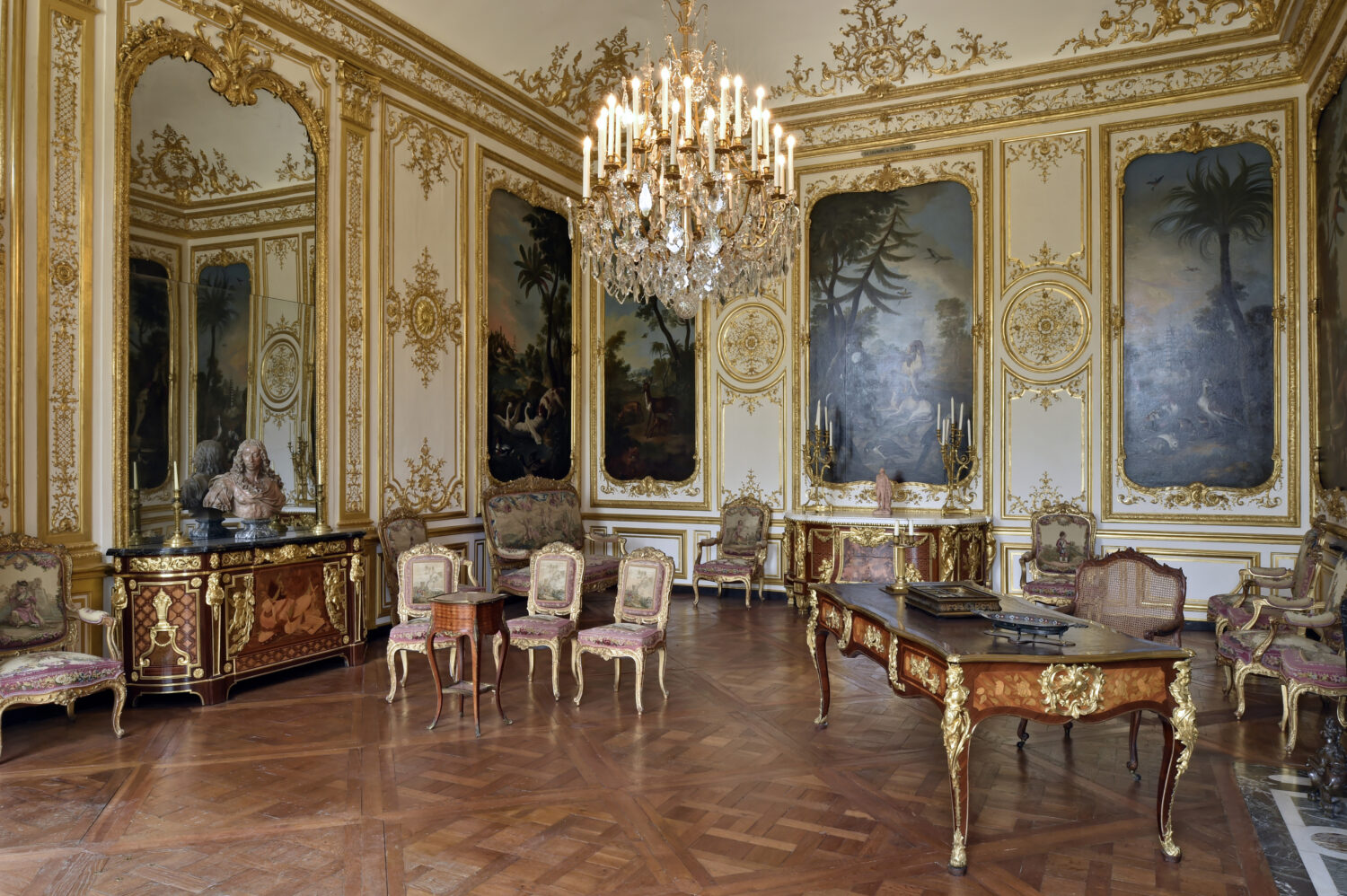
© Gary Otte
The Grande Singerie
This boudoir, which is reminiscent of the penchant for Asia that was fashionable in the 18th century, was entirely decorated in 1737 by mural paintings by Christophe Huet, depicting monkeys performing human actions, making fun of men and their foibles.
Find out more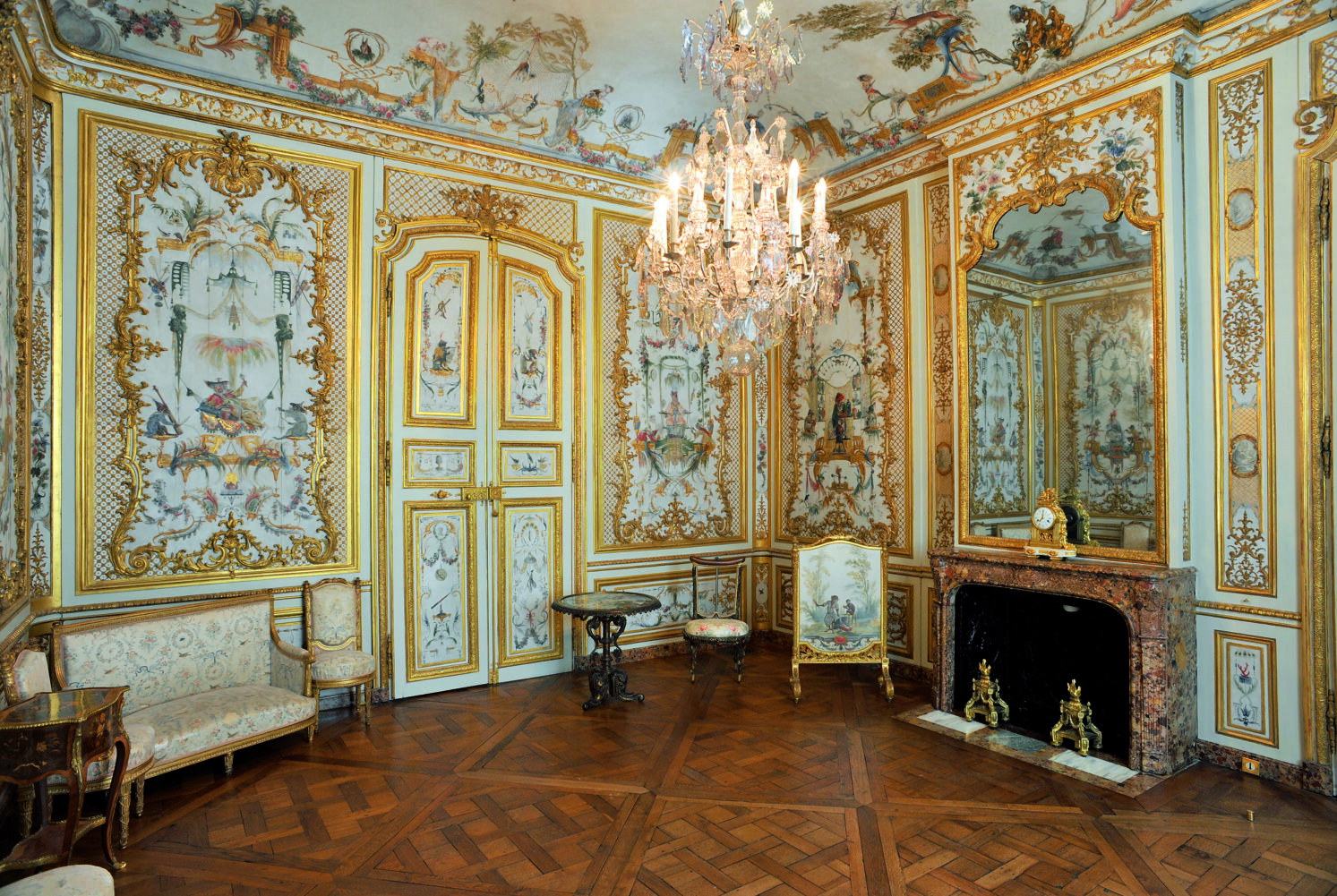
© Béatrice Lécuyer-Bibal
The Gallery of battles
This is the most spacious room in the large suites and was used as a reception room for the Princes of Condé. It was decorated at the end of the 17th century for Louis II of Bourbon-Condé, known as the Grand Condé, by Jules-Hardouin Mansart, principal architect to King Louis XIV. The Gallery of Battles exhibits a series of eleven paintings illustrating the main military victories of the Grand Condé in chronological order.
Find out more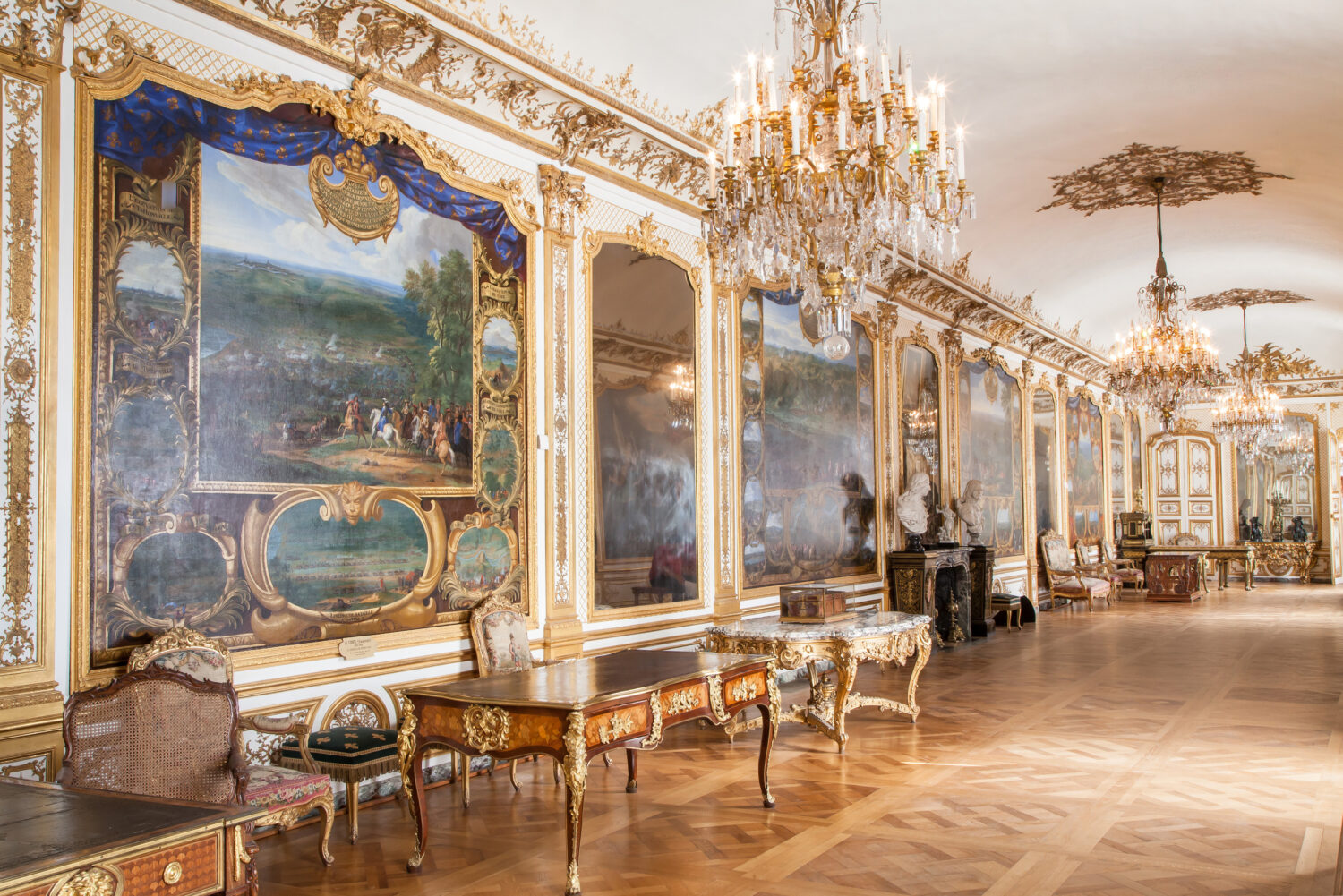
© Sophie Lloyd
The Music Room
The music room was given its name because of the 19th century English harp which apparently belonged to the Duchess of Aumale, wife of the Duke. In the 18th century, it had been the natural history room of the Princes of Condé. This room exhibits gilded wood furniture by Georges Jacob, which was commissioned by King Louis XVI for the Games Room at the Château de Saint-Cloud.
Find out more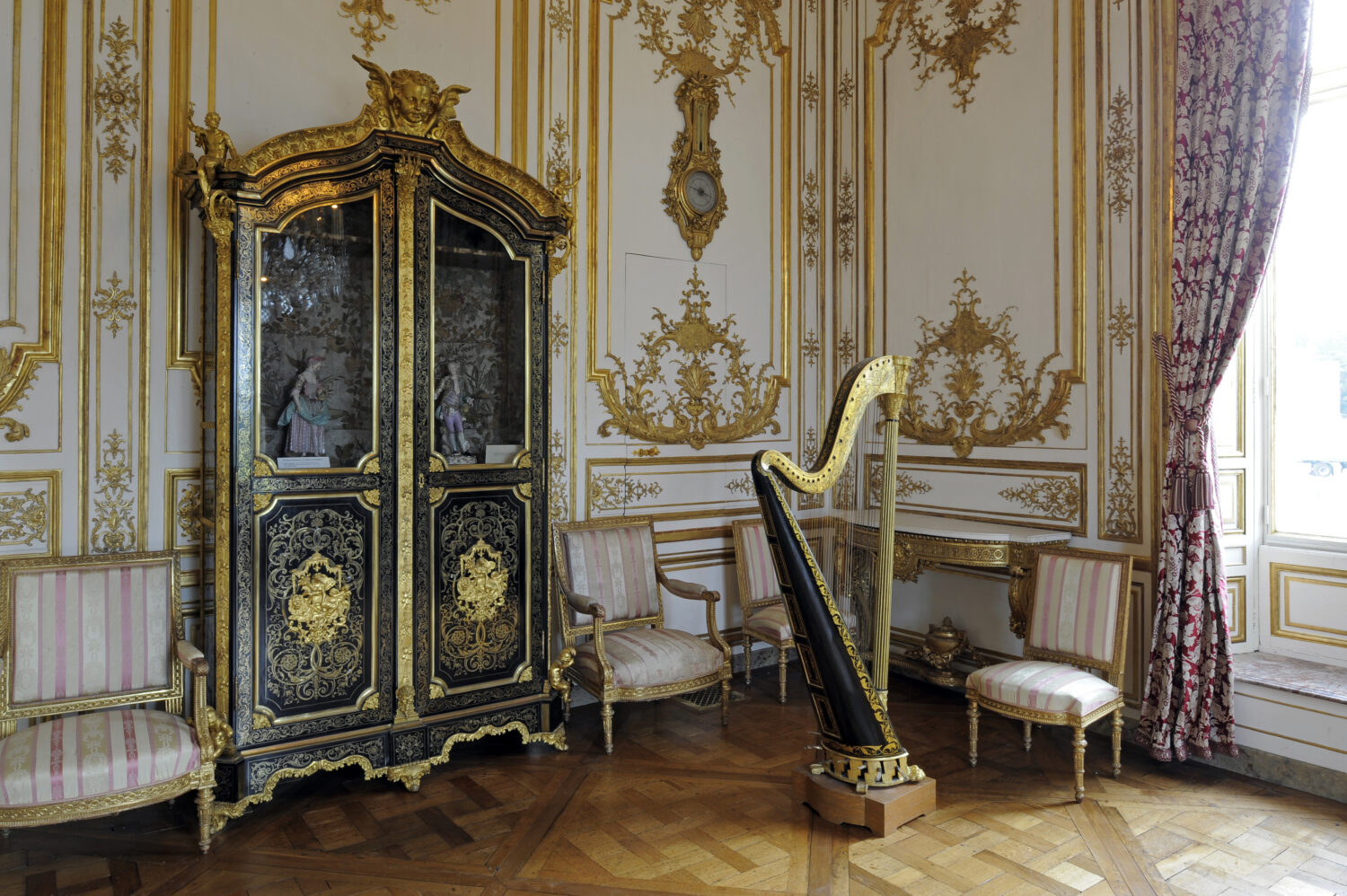
© Gary Otte

